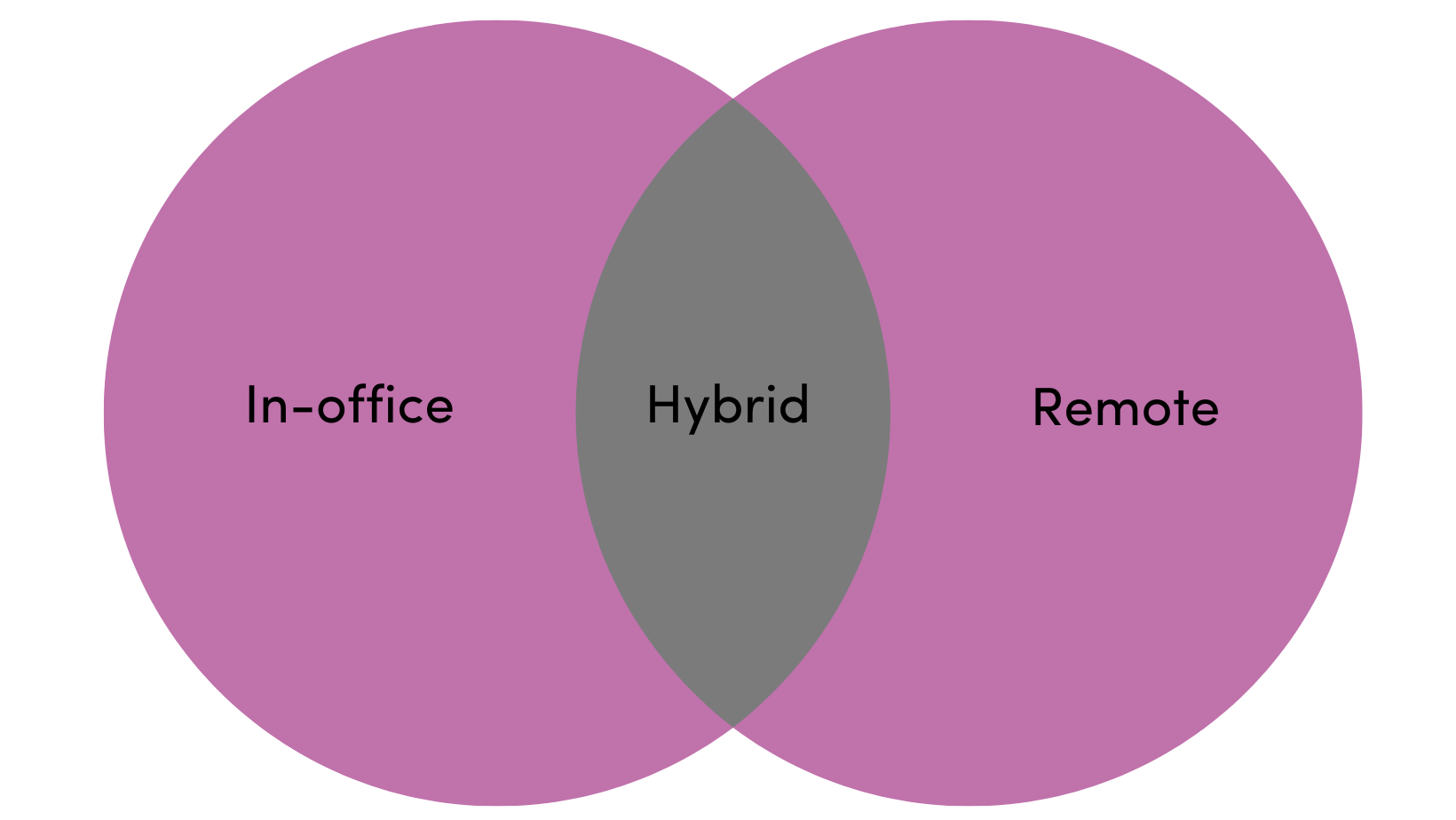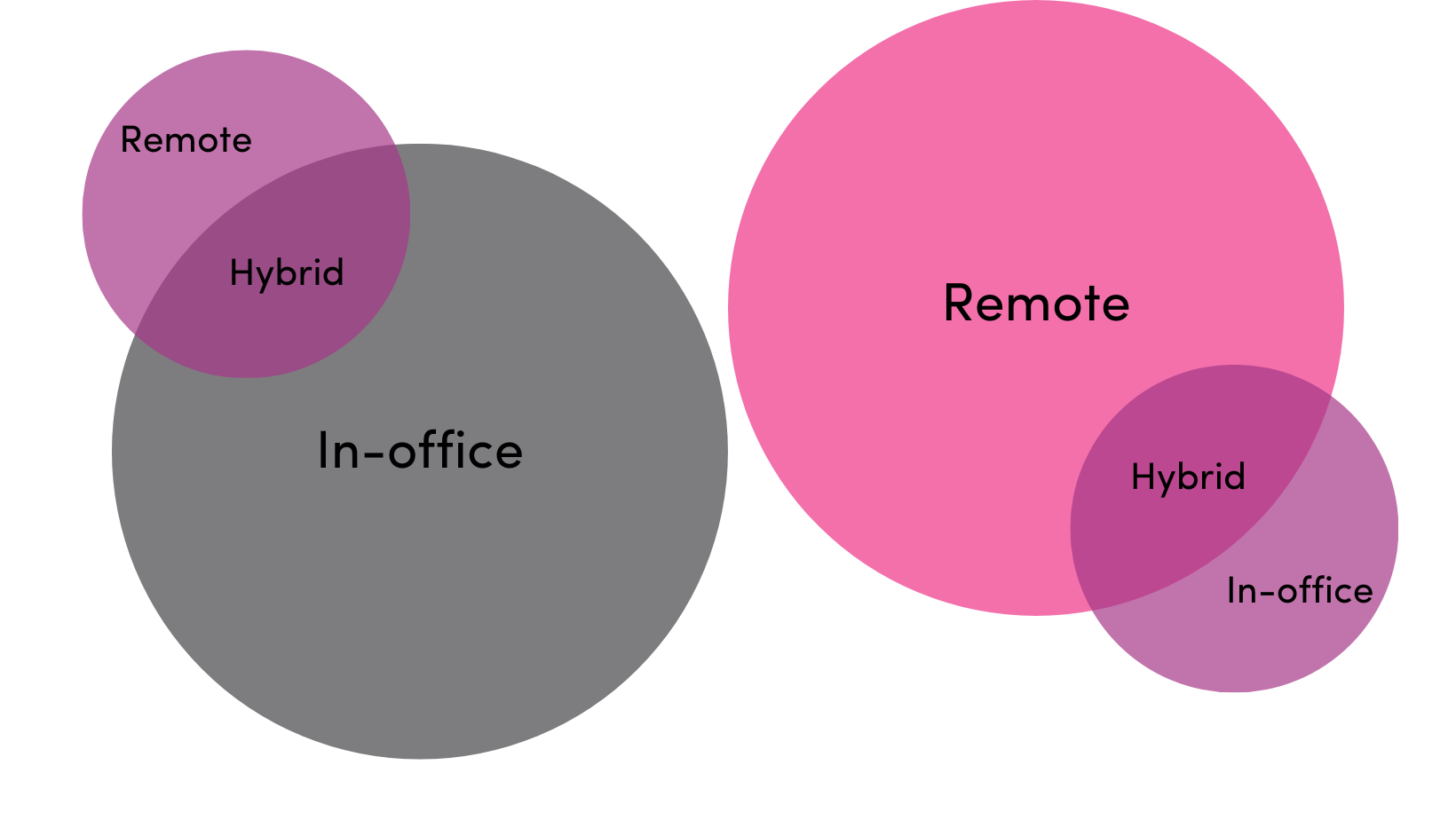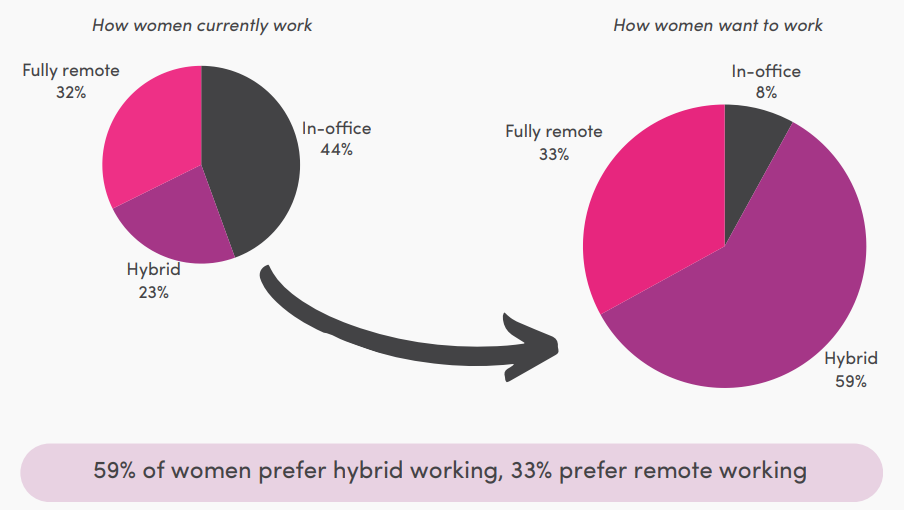
The Working Women in SA Report recently published by RecruitMyMom, finds that only eight percent of women want to work just in the office. This does not mean that the rest want to work remotely. Despite a commonly held view, not all working women want to work fully remotely; this report finds that the majority, fifty-nine percent, want a hybrid work model.
Many organisations worldwide are bringing their employees back to the office after the COVID-19 remote work movement. Not denying the benefits of in-office work, companies who do follow rigid return-to-office policies run the risk of losing top-calibre female talent.
Employee satisfaction is higher in hybrid workplaces because employees typically have better work-life integration. Creating a workforce that is stable, healthy, and productive benefits businesses, and studies show that implementing inclusive workplace flexibility is a sure way to enhance the quality of work as well as productivity.
This article unpacks everything employers need to know to make an informed decision about whether the hybrid model will work for their organisation.
What is a hybrid work model?

A hybrid work model combines remote and in-the-office work, giving employees the best of in-person team interaction and flexible working. The first thing that comes to mind when thinking about a hybrid model is the so-called three days on, two days off. Where an employee works three days in the office and two days from home. However, office time can be scheduled on a daily, weekly, or as-needed basis.
For example:
Hybrid can mean that the employee works most of the time from their home office but comes into the office for team meetings and brainstorming sessions.
Or it can be that an employee works most of the time in-office, but is allowed to do some work from home when they need focused time.

“Where and when work gets done will be determined by what makes the most sense to drive the highest levels of productivity and engagement,” according to Gartner.
Hybrid working forms an important element of the way people want to work and will work in the future.
Read our article about the workplace trends that are shaping the future of work.
Why the hybrid workplace is becoming the norm
Before the pandemic, work was slowly shifting towards remote and hybrid work arrangements; however, COVID-19, sped up this workplace shift. Companies had to swiftly overcome many obstacles, ranging from supplying the appropriate office equipment to overseeing morale and productivity in a distributed team setting. After a few months, it became clear that many employees preferred the new, more flexible way of working, and there was no turning back.
Modern technologies have eased the shift to hybrid work by making it possible to collaborate effortlessly, regardless of location. When utilised well, technology can provide employees access to all the resources required to carry out their roles, including cloud computing and collaboration tools.
An inclusive hybrid workplace is the ideal "new normal," where employees are productive, engaged, and feel connected and included regardless of where they work.
RecruitMyMom’s research found that twenty-three percent of working women in South Africa already work in a hybrid setting.
The diagram below shows how women in the workforce currently work versus how they would prefer to work. Fifty-nine percent of women prefer to work in a hybrid workplace, indicating the employee-driven demand for hybrid work.

RecruitMyMom’s Working Women in South Africa Report 2024
See the findings of the full Working Women in SA Report 2024.
Benefits of a hybrid work environment
The hybrid work model is good for business. As per RecruitMyMom, “Attracting and retaining top-tier talent is a goal shared by every forward-thinking company. Embracing flexible work arrangements positions you as a progressive and inclusive employer, making your company
inherently more appealing to skilled professionals, especially women.”
In a study by Gartner, “high performers” accounted for only thirty-six percent of employees in typical organisations with forty hours a week in the office. When companies adopted flexibility and the hybrid work model, giving employees more control over where they worked, fifty-five percent of the workforce demonstrated “high performance."
The benefits of a hybrid work environment include:
Increased productivity
Increased productivity among hybrid employees is a result of several factors:
- There are fewer distractions at home than at the office,
- The ability to save on commute time,
- The chance to visit the office when face-to-face connection is most effective.
- Ability to manage both work and home responsibilities.
Reduced overhead costs
Companies are looking at opportunities to reduce office space or move their offices to lower overheads.
Improved work-life balance and employee experience
Hybrid employees tend to have a better work-life balance, which leads to increased employee satisfaction and, therefore, reduced staff turnover, saving on hiring costs.
Attract and retain talent in a skills-shortage market
South Africa is navigating a skills-shortage market; implementing a hybrid model proves instrumental in attracting and retaining top talent. By blending remote work options with in-person collaboration, organisations offer flexibility, which is crucial in accommodating diverse work preferences.
Access an underutilised female talent pool
Eighty percent of women in South Africa have dependants. By embracing flexible work arrangements, like a hybrid work model, you align with the realities of modern life by acknowledging the responsibilities and priorities that your team members balance. This alignment fosters a supportive and inclusive workplace culture and directly contributes to increased loyalty, productivity, and overall job satisfaction among valuable female employees.
Hybrid workplace best practices
The shift to remote work in 2020 was abrupt and driven by necessity, but now companies have a chance to be more intentional in their approach to how they work. According to Forbes, “The hybrid workspace is about enabling as much productivity as possible without costing our employees too much personal time, sacrifice, or ability to control their workday.”
Here are some best practices when developing an effective hybrid workplace model:
Get early buy-in from employees
Ensure open, frequent, and early communication with your employees. Share the benefits of the selected hybrid work model so employees understand the organisation’s reasoning for choosing a particular model. Engage with your employees to ensure that the model will work for them too. You do not want to lose valuable talent over hybrid working - it should be seen as a benefit.
Invest in the right tools and technology
Ensure the correct tech tools are acquired for seamless connectivity and collaboration. It is important that these tools for productivity and communication work across various device models and are compatible with mobile.
Focusing on employee experience and maintaining a positive and engaged culture
Encourage employees to share concerns and ask questions. Feedback is valuable. Ensure employees understand the communication process if they have any hiccups relating to work or carrying out their tasks within the new hybrid model.
Hold regular employee feedback sessions and check-ins
Whether it is online or in-person in-office, schedule regular team check-ins and employee progress meetings. Make sure the employee understands what is expected of them and what their deliverables are.
Flag any concerns early on so these issues can be rectified or improved on before the next meeting or check-in.
Offer continuous learning and development opportunities
Learning and development play a vital role in nurturing employee growth and satisfaction. Highlighted as the fourth most desirable benefit for working women by RecruitMyMom, these initiatives are crucial for equipping employees with the skills needed to excel in a dynamic work setting.
Navigating the transition when implementing a hybrid work model
The obstacles to implementing a successful hybrid work model vary slightly for every organisation. The hybrid team leaders need to be aware of these common challenges:
Creating the ideal hybrid work model
Each organisation must create a model unique to its requirements. Employers will need to decide what that hybrid model looks like for their organisation and adapt it accordingly.
The model will take time to refine as various combinations and technologies are tried and tested to find the best fit for each organisation's unique situation and culture.
Equal treatment of employees
In the context of a hybrid workforce, managers need to be mindful of guaranteeing equal opportunities and exposure for both on-site and remote employees. In a hybrid setting, evaluating based on "work produced rather than work process" is crucial, and means focusing on the outcomes of employees' tasks rather than how they go about completing them.
Establishing seamless connectivity
Organisations must ensure they create barrier-free connectivity that enables quick and effective communication among hybrid teams to prevent disparity between teams that will cause inefficiency, low productivity and potential knowledge loss.
An organisation can invest in many online collaboration tools and communication platforms to ensure constant, seamless connectivity between team members and management.
Increased security risks
Security will remain a risk and a concern as businesses adopt hybrid work models.
The organisation will need to concentrate on end-user education and IT security as more employees work from home using their networks and possibly their own devices.
Are you ready to make the shift to a hybrid work model?
The talent pool is rich with exceptional female professionals, and by offering flexibility in the form of a hybrid workplace, you send a powerful message that you understand and respect the diverse needs and aspirations of your workforce.
Do you require assistance in finding the right candidates for your hybrid workplace? RecruitMyMom.co.za places highly skilled women seeking career growth into permanent, contract, and independent contracting jobs, in-office and remote. Post a job or ask us more questions.


